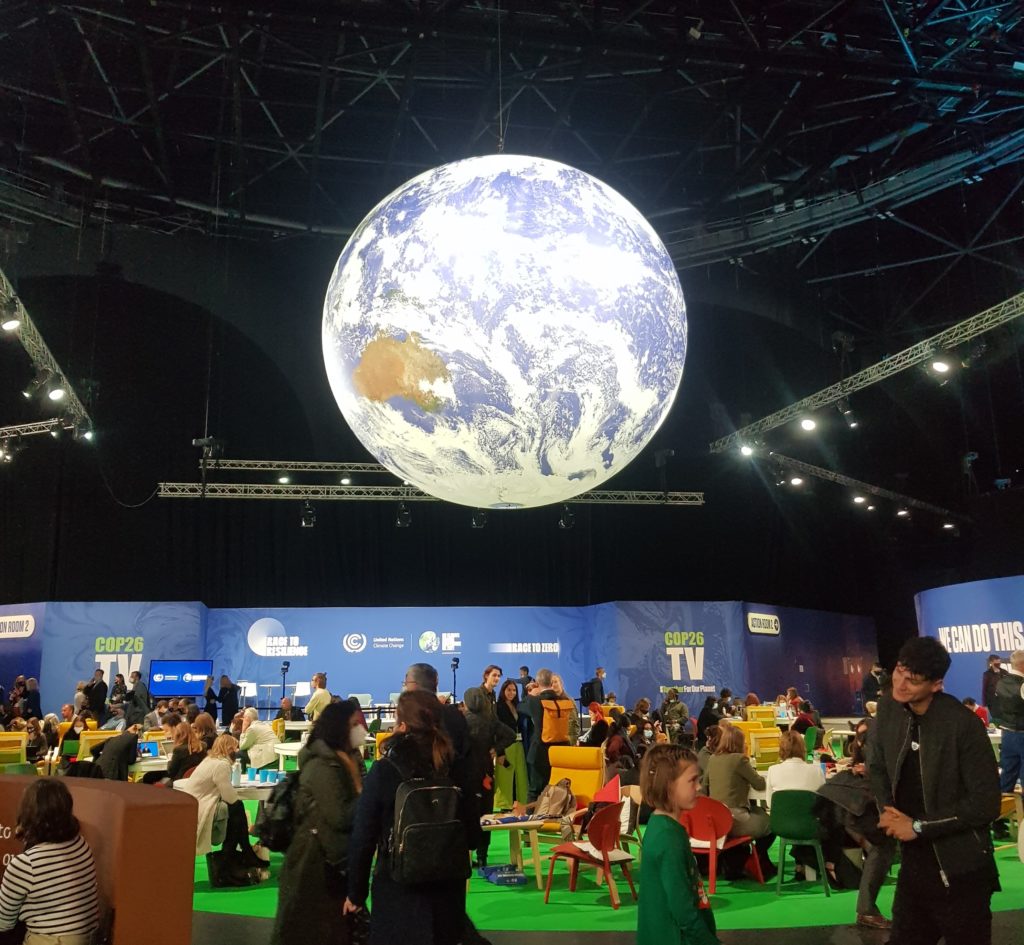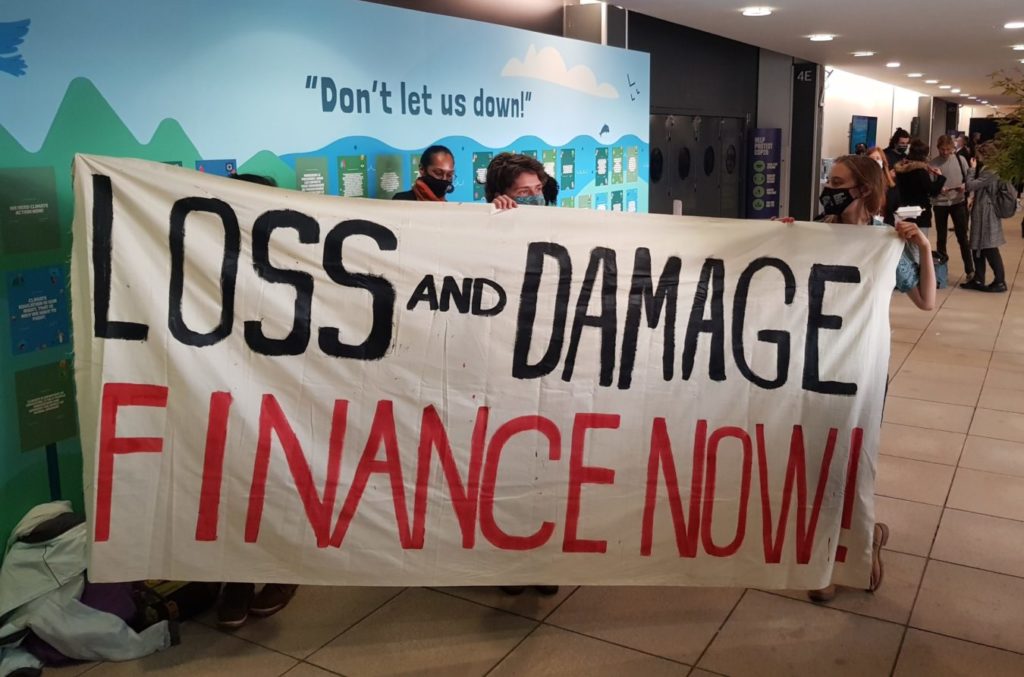“COP has now become a Global North Greenwashing Festival”, summarized Greta Thunberg as she closed the rally of the Youth Climate Strike in Glasgow.

Greta has come a long way. In 2018, COP24 elevated her voice onto the global consciousness. The young, then 15-year-old girl talking in an accusing, emotional tone, to the distant, very formal process of the COP. Now, she doesn’t need the plenary hall anymore. Here, she was outside, missing no opportunity to distance herself from the inside of COP. My personal view of COP26 comes from my week-long experience in Glasgow, observing the unseen scenes — those which did not catch the media audience’s eye.
After wandering around those blue halls for almost a week, the accusation of “Greenwashing” has started to feel quite understandable. The country pavilions calling for innovative technologies to green the economy. Everywhere, words like “youth”, “empowerment”, “indigenous” pop up in the event schedules and flat screens, displaying “Youth leadership”, “Youth coalition”, “Youth voices” – “Youthwashing”, as one activist coined it. I came across Formula E-Cars, hydrogen exhibitions, the UAE and Saudi Arabia presenting their ‘green solutions’, firm logos and sponsored events popping up everywhere. At the same time, an energy corporation representative was sitting in an event of the WWF (World Wide Fund For Nature), telling us that there were only two or three cases of Greenwashing at this conference. In reality, businesses would have understood the youth and now lead the way. “Politics should step aside.” He wasn’t contradicted.

This all seems to give a solemn promise: Our wonderful new green economy, our green new world – it will all be great. Cardboard trash bins (even the garbage will be recycled properly), cool refillable water bottles, learning that the CO2 footprint of the vegan option is ½ lower than that of the chicken curry, knowing that the IKEA furniture I was sitting on will find a new life in some school or institution afterwards. Flashy animations on giant screens. Hydrogen and e-racing cars. Moreover, a Green Zone which was announced as a hub for civil society, businesses and other “climate leaders”, presenting our real green leaders. These are, obviously, big international corporations – exactly the firms that sponsored COP26. That’s also why they were each granted an exhibition space of a size that would suffice for ten civil society groups in the hall next door. Wait. Before going there, we must try that VR headset that allows us to wander on an offshore wind park or in a vertical agriculture hall. It will be all be great.
Coming out of the somewhat hermetic space, I met my colleagues, who, in parallel, were observing the street protests and movement assemblies. Inside, I didn’t hear anything of the outside world, let alone the protesting activists. The stage of COP26 was carefully prepared as a nourishing soil for a new green economy. Running through this technology-business circus, one might wonder if it is even worth it for climate justice activists to continue engaging in COPs.
But these people are also wandering through the halls – the youth activists, the civil society organisations, indigenous communities – forcing other issues to be debated, protesting in the hallways demanding loss & damage finance – a topic on the official agenda which resulted in no substantial outcomes (also here). Some activists were calling out false solutions. One activist from Argentina told me about her seven years of experience as an activist for plant-based food systems. Six years ago some minister told her that there would never be any change toward veganism as a climate solution – and today he said that this trend has become inevitable.

This could give some hope for the future. Some have been trying to act from within and they will continue to do so. Others have probably given up. It may be easier to dismiss the COP altogether and not to wander through its halls anymore. Indeed, despite all the claims that “we’ve listened and understood”, the official process of the COP seems to become more and more distanced from the civil society demands. The most visible climate activists seem to follow suit.
On the new lowlands that have arisen in between, we can expect more contention to come. Movements like Fridays for Future radicalize in tone and action, and the overall climate movement tries to come up with an attractive counter-narrative to the Green economy presented by the COP and discusses alliances. We might enter the next phase of the new climate activism. Is the “Green New Deal” slowly becoming every activist’s darling?